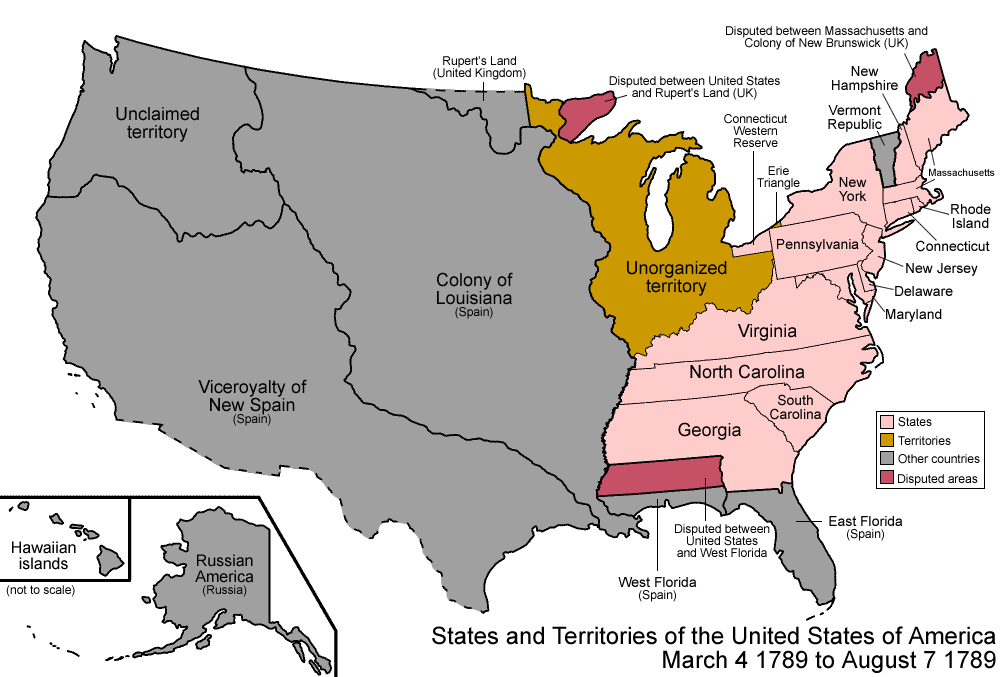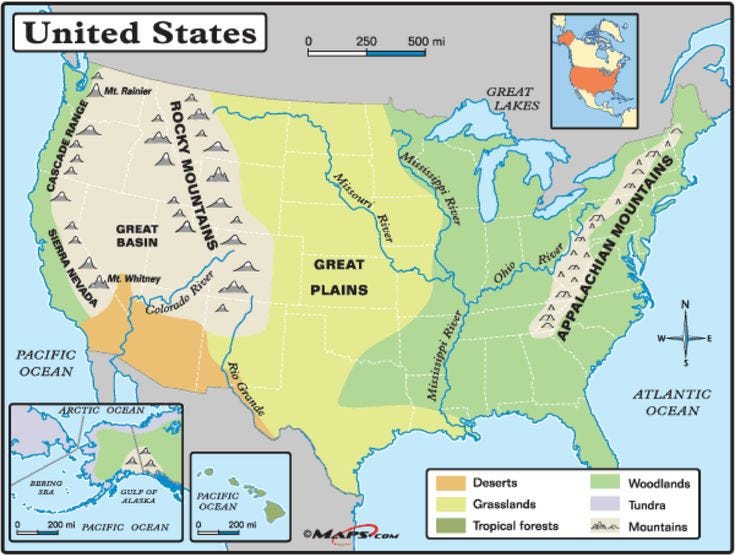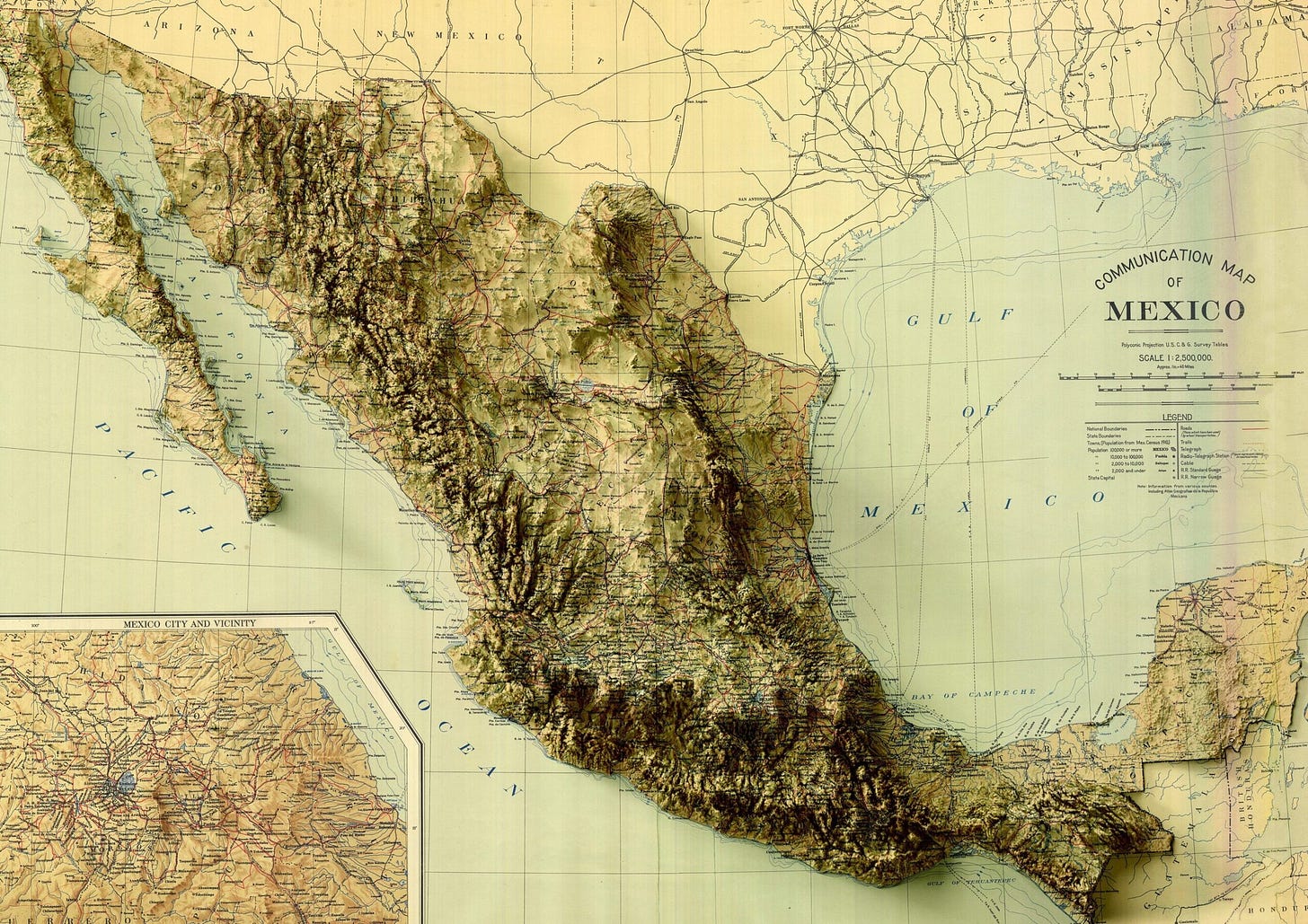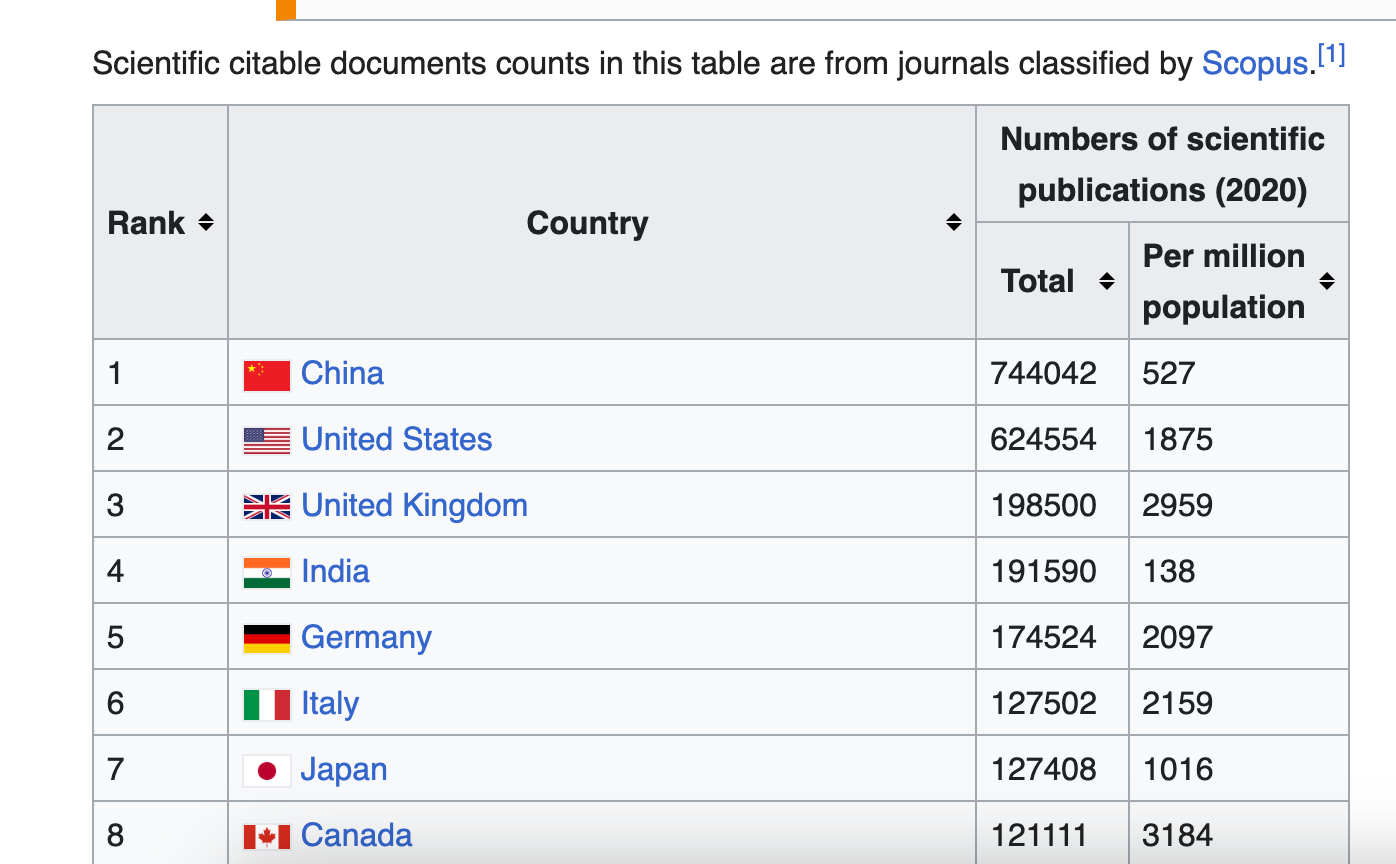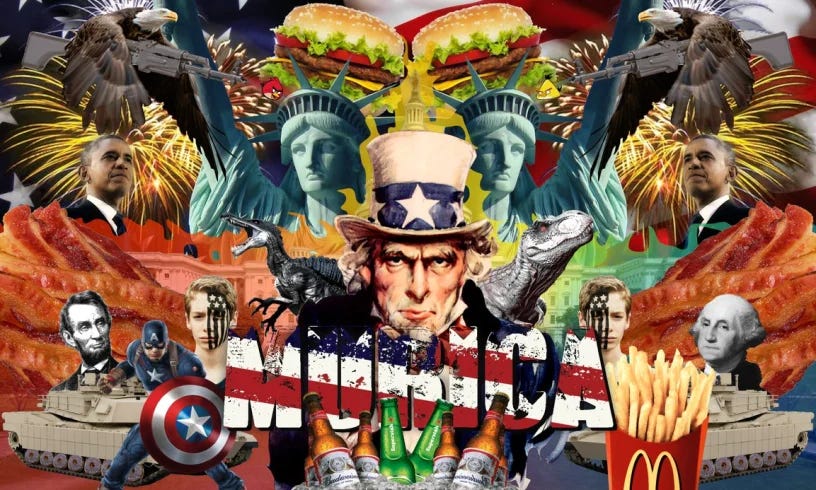Old guys love the USA. When you ask them: why? The responses are a bit nebulous. They might say:
You can’t beat the S&P 500.
The USD is the world's reserve currency, so they are the most powerful nation and the best place ever.
They have the strongest military, so they can do whatever they want and get away with it.
American companies are great.
The American Dream…
Or they might say “I hate the USA” because they are Russian Oligarchs who are worth 50 billion USD from selling weapons to terrorist groups in the Middle East. Or Luigi Mangione.
The US-loving old guys are not alone. Brilliant and cultured young people say that America’s power comes from its financial system. That doesn’t sound like a full answer to me.
Uncle Sam’s hegemony has been rampant for a long time, but where it comes from is more nuanced. The “world’s reserve currency” talk has only become popular in the past decades. The concept of being the world’s financial system is also relatively new for them, enabled by modern technology, the fall of grace of the UK and globalization. All of these old guy/smart guy arguments might be true, but they might be incomplete or confusing cause-and-effect.
The US military does have something to do with their success, and Americans are very sophisticated workers. And, it’s true, it is hard to beat the S&P 500 selecting stocks. The USD is the reserve currency, and that holds power. But there is more to it…
If I wanted to construct a more complete answer for why this country in particular has had an economic, military, and cultural hegemony for several decades, I would have to mention and look into the USA’s:
Geography
Demographics
Legal infrastructure and Rule of Law
Education
Military and Intelligence Infrastructure
Culture
Depth
All of these come together to create the real answer. And that answer, in short, is that it was almost the perfect storm for the rise of a Superpower.
The order is somewhat pyramidal by complexity, but all of these factors evolve together and iterate on each other through time.
1. Geography
For us, youngsters from Gen Z, the USA seems very monolithic. But it has been expanding since its inception. Some of that expansion was achieved by purchase or convincing independent states to join the Union. Other territories were acquired with a less gentle approach.
The resulting territory is very interesting. It has key features that have allowed prosperous growth, progress, and innovation.
For the population in a country to sustain itself, they must have enough food and drinkable water. It is key for them to be able to procure those from nearby.
Complex cities also need additional resources that may lie way beyond what their current capabilities of reach are, so they have to trade with each other.
Energy, natural resources, and processing of materials are needed to sustain the industrial projects that will help aid production, transportation, and consumption (increase labor productivity).
Conflict will waste resources and disrupt investment, production, and distribution; this causes stagnating or negative growth. A country must do what it can to avoid unnecessary belligerence.
There has to be some land extension to isolate or cushion key centers from potential threats and to lay out a good distribution plan for industry, cities, farming, etc., and avoid things like crop contamination.
The US’s geography satisfies all of these to a great extent.
The Midwest has great fertile lands with reliable and consistent rain. These lands also contain a plethora of natural resources, minerals, organic materials, etc. Thus, the country has a huge bank and a variety of resources it can draw from and create to produce many of the necessary goods and services the population requires internally.
They also have huge oil reserves, natural gas deposits, and coal, so energy is abundant and nearby.
They have amazing internal water systems for water freight, which is the cheapest form of resource transport. They can also ship to and through their coasts and have very flat land where railways can interconnect the country. Railway is the second-cheapest form of transport, and it heavily benefits from flat and open land. They have the Panama Canal to unlock inter-coastal commerce with the western part of the country, which is sort of blocked from the rest of the country by a mountainous area (rocky mountains). All of these allow for their resources and labor to freely roam through the country, ensuring the most efficient use of said resources.
In contrast, look at Mexico, which is mountainous as fuck all the way through. This makes it very hard to sustain cheap internal commerce because truck freight is extremely expensive. Low economic activity limits the government's ability to create more infrastructure, so it becomes a vicious cycle.
The more the US grew, the more tax revenue the government had, which allowed it to expand and improve the existing internal infrastructure. This creates more activity, and a virtuous cycle of growth begins.
They have internal integration, and Mexico, Canada, and the US have well-integrated geographical borders that allow for close international trade.
A close relationship with these two, it’s only land adjacent neighbors, also means they don’t have to worry about antagonistic cross-border activity. The Cartel’s are a worry now, but during the last couple of hundred years, the natural landmarks + alliances have allowed for not only peace, but very intricate and widespread collaboration within the North American region.
There is a river and desert between them and Mexico, and other types of natural frontiers between them and Canada. The US capital, key commerce centers, and most important cities are very hard to reach for anyone outside the US, even Canada. So they are well protected. Militarily wise.
Additionally, all of America’s opponents, in this case China, Russia, Iran, and some non-state actors, are extremely far away from any US territory. Inland conflict with any enemies would be much harder. The moat between them is a great deterrent/defense.
The huge land mass allows for very different climates, scenery, and tones. It also allows for isolating whatever needs to be isolated, like factories from cities, without too much opportunity cost. The huge land mass allows for a capacity to host lots of people.
In summary:
America’s expansive geography provides abundant natural resources, fertile lands, and efficient internal transportation. Its favorable borders and protective natural barriers enable stable domestic growth and minimize external threats, setting the stage for sustainable prosperity. We have the place, now let’s see who will live in it.
2. Demographics
As a secondary consequence of point 1, people are a fundamental part of a nation. The US has lots of them, and they are very productive. As said, because of the abundance of space, resources, and infrastructure, the land can sustain a huge amount of population. We forget sometimes, but they have the third-largest population in the world.
GDP/Capita is a great way to understand individual productivity and have a size-adjusted measurement of economic wealth. The US has a high GDP per capita. Although this, in a hegemonic situation, size matters. Size gives you resources, capital, bargaining power, coercive power, versatility, and potential for diversification.
As the US industrialized and became more productive, its population grew incredibly fast. Especially during the Baby Boomers’ generation at the end of WWII, when Uncle Sam consolidated its position as the leader and protector of the Western world with the manufacturing of the Nuclear Deterrent, the creation of NATO, the creation of the UN, etc. Of course, not without making themselves the head of the table and holding positions of significant power.
The population is huge, and it is also relatively young (below 40). Young people are productive; they contribute to the system, but don’t require much from it (like pensions and medical attention). So they have a huge worker base in which +60% of the population is in the labor force.
A vast, relatively young, and productive population complements America’s geographic advantages. High productivity, driven by a large, engaged workforce, has transformed abundant resources into enduring economic power, positioning the U.S. as a dominant global economy.
So we have the people and the place, next up, we set up the rules.
3. Legal Infrastructure and Rule of Law
Ernesto Zedillo Ponce de Leon, my cousin, is a very important character in Mexican history, he became president of Mexico in 1994 after a very dramatic set of events where the favorite candidate, Colosio, was assassinated by a fanatic in one of the campaign events. Zedillo was sort of a technocratic character, an economist with a PHD in Economic Sciences from Yale. After his mandate, he has been a very influential figure in US academic circles in the last years, talking about the basis of economic prosperity and growth.
His contention, broadly, is that without Democracy, real Democracy, there is no justice. Moreover, his opinion is that one of the main factors that has held Latin America back on its potential is the weak rule of law, weak government institutions with no counterweights or controls, and weak/corrupt execution of the established laws.
The US has not had that problem. For most of modern American history, they have had a solid constitutional democracy where marginalized groups have been able to slowly but surely gain all the required civil rights. As good descendants of British tradition, John Locke and Adam Smith (among others) inspired them to create: well-established human rights, property rights, the right to a free and fair trial, (somewhat) free markets, freedom of association, freedom of protest, etc.
In summary, a well-established rule of law and good continuity in political action concerning the general management and legal infrastructure of the country.
These are not perfect, of course, there is corruption, in the US and inefficient government bureaucracy. It is insane how expensive it is just to file a blank tax return, but relative to the rest of the world, they have it great.
From that base of liberal federalism and democracy, the constitution and its execution provides: separation of powers, checks on the Executive by the Judiciary and Legislative, counterweights with the two party system, legal certainty, a representation of popular voices on the management of a country, the creation of institutions that safeguard civil rights, a police force that persecutes crimes, a judiciary that punishes wrongdoings, space for reform to adapt to current trends, an independent central bank and many other elements of constitutional and legal infrastructure that allow for the following key structural building blocks of innovation, investment and growth:
Legal and political certainty
Well-defined property rights
Accessible and functional justice to prosecute crime
Access to public information
Free markets, free speech, free association… freedom
Etc.
People see the US’s legal and political system as robust, resilient, and efficient. They consider it one of the best in the world. Which means, as we know, they play the game of trust. A great legal framework with a great track record for execution gets them trust.
Checkpoint:
Stable institutions, strong property rights, political continuity, and reliable justice systems create trust and certainty. This robust legal and institutional framework encourages innovation, investment, and economic growth, reinforcing America’s status as a preferred destination for global capital.
When institutions are strong, new generations benefit, one of which is a strong educational infrastructure.
4. Education
The United States’ public and private school systems are very good. The country as a whole has a +90% secondary education attainment rate (Top 15). Kids not only have the right to go to school, they have some sort of soft obligation to do so.
They have a 44% tertiary education attainment rate, which means that they are top 10 in the world on people who have achieved above high school education.
Even more, they are the second largest producer of scientific publications and hold some of the world’s most prestigious universities, including Harvard, MIT, Stanford, Georgetown, etc. With great financial resources and research infrastructure that attracts and retains the best talent in the world. Which then produces key professionals who make important findings that, in some ways, give even more advantages to the US project as a whole.
The US education system has flaws, but it has allowed a large chunk of the population to be schooled. It is a well-studied fact that a more educated population is a more productive population. Which means that GDP per capita tends to increase very reliably when you can educate your population to a higher degree. It is a no-brainer that + education is better. There are probably diminishing returns on this after some point… most of the world is not getting educated enough, especially in a world with growing labor complexity.
Catchup.
America’s highly educated and skilled workforce enhances productivity and innovation. With globally renowned universities and research institutions, the U.S. continually attracts top talent, fueling its economic leadership and technological edge.
These people are smart and all, but not as much as my bro’s in the Infamous Military Industrial Complex (Which doesn’t exist).
5. Military, Intelligence, and Soft Power Infrastructure
The US has the largest military in the world. They spend 3X more on defense per year than the second-place in military spending, China. Almost a trillion dollars spent.
We are all chill people. We are chilling over here... However, sometimes, people get a bit crazy. Sometimes that craziness must be met with a punch in the face. Sometimes… Sometimes crazy means terrorists and a punch in the face means bombing the shit out of some middle easter village turned insurgent base for paramilitary groups. Of course, I am in favor of the Geneva Convention and how International Law dictates that belligerence must be conducted.
Complementary to the US military, we have the American Intelligence services. The CIA, NSA, and the rest of the Intelligence Community. They are the ones who turn Mexican presidents into CIA informants, tap your phone to hear you order an extra large pizza by yourself, try to organize coups in foreign countries, and many other colorful endeavours. They also, allegedly, kidnapped this loony:
Just Kidding. CIA dudes… I’m just being a goof. I love u all, if you want me to spy for you, just send me a DM…
In all seriousness. The intelligence agencies, alongside the military, have tasked themselves with caring for US national security by gathering, processing, and delivering National and International intelligence on potential threats to the executive to effectively:
Patrol and watch the world’s most important trade routes to ensure the continuation of global commerce, promoting cheaper & better goods,
Portraying strength as a deterrent for international conflict between allies (NATO, Australia, etc.) and antagonists, for example, supporting groups in fights against authoritarian regimes that destabilize the global order.
And more…
In this venture, they have managed to create fundamental western alliances and, sort of, promote democracy / human rights in places where the liberal light does not shine, and, of course, have very favorable negotiating conditions/tools all around the world. Those conditions/tools can be very effectively leveraged as a way to procure US interests abroad.
These two institutions, in addition to being huge consumers, contribute to the political and legal stability by ensuring that democratic institutions, trade, alliances, and safety are not compromised by groups following an agenda that is orthogonal to policies and an environment that allows Americans to thrive.
Catchup:
America’s unmatched military and sophisticated intelligence networks safeguard trade, secure alliances, and promote global stability. By protecting domestic prosperity and extending influence abroad, these structures underpin sustained economic and geopolitical dominance.
The Military is a cultural landmark, and the CIA is as well. I can’t imagine it possible for the Americans to create more war and spy movies. Speaking about movies… American Culture is almost the last element. Something vaguer, but that cannot be overlooked to understand the American success story.
6. Culture
Americans are a complex group of people. Very heterogeneous and polarized. Everything you see online about the country screams of hustle, grind, and giving it your all. But, if you look closer, they are the 40th country regarding average hours per worker. A lot of things we see online talk about being fit, strong, and healthy, yet 40% of the population is obese. “The land of the free” is their deal, but they have one of the highest incarceration rates in the world. This is all as a way to say, culture is a very complex thing.
We have Silicon Valley; all about efficiency, risk-taking, dreaming big, anti-establishment, and you can’t make an omelette without breaking some eggs. You have Wall Street; all about risk management, institutionalism, relationships, old money, and cosmopolitan living. There is also the Midwest, traditional conservatism, blue collar work, tough cities, industry, and agriculture. All of these and everything in between exist in American culture. They are different, but they come together a lot of the time. What we do know is that these different vibes… they all prize excellence - fitness.
I was watching a conversation about the Trade War. This guy, Thomas L. Friedman, was talking about the difference in how seed capital funds ideas in China vs. in the US.
In the US, the VCs want to see great people, great projects, great entrepreneur experience… great whatever, to fund. In China, they want to see willingness.
The Chinese fund plenty of projects that might not look great at the beginning, but might become great after being forged by the fire of competition. In China, hundreds, or even thousands, of startups get funded to ruthlessly fight each other to create the same product or service, and the fittest ones remain in the end. Something like this:
In the US, VC funds only fund projects that look great at the beginning. A handful of projects get the honor of being funded to be able to compete. (The market is not nearly as gatekept as LatAm markets.)
Same with the universities, Harvard accepts approximately. 3% of applicants per class, applicants themselves are already subject to a selection bias filter. The number of people who want to get into Harvard and get in is stratospherically low. Once you get in, you have a 98% chance of graduating.
On the contrary, the university I went to in Mexico, ITAM, has soft barriers of entry. It’s practically an open border compared to Ivy League schools. But, the graduation rate is cited by insiders at 2%-10 %. Also by insiders, they have seen up to half of newcomers leave within the first year. Same principle, fit at the beginning vs. fit at the end.
Collectively, when standards are high, people start to perform better as they tend to compare themselves to their peers. I don’t know if the Chinese VC or the American VC produces better products and societal value add, but I do think people push themselves harder to be great when opportunities are more concentrated at the top. (I do like the fit at the end model as you avoid selecting out people who are late bloomers, but who can be the greatest, think about Tom Brady)
Also, different from Latin American countries, Americans are generally law-abiding citizens; they have a culture of virtue where having integrity is rewarded. People & politicians seem to be respectful of their institutions. There is a culture of Nationalism where people pay their taxes and pride themselves on doing the right thing. (All of this, of course, with a grain of salt.)
America’s complex cultural landscape blends ambition, innovation, and competitive excellence, despite contradictions and challenges. This cultural emphasis on achievement, resilience, and institutional respect fosters an environment conducive to continued economic and global influence. This blend of six factors create a lot of growth, a lot of growth means a lot of resources, a lot of resources mean a lot of circulating currency. All of this results in a lot of liquidity.
7. Depth
Given the size of the US economy, predicated on the aforementioned factors, there is a lot of depth to it. If the circulating supply of something is very large in value, individual purchases and sales of assets have less price impact. Meaning that the rest of the world holds US assets like T-Bonds, S&P500 index funds, and others, under the presumption that they are the easiest to sell at any given time without castigating the price. It is not infinite liquidity, but it is the largest in the world.
This is the final piece of the puzzle. Now, let’s put it all together.
Bring It All Together
When people say that they are going T-Bonds (US Treasury Bonds) as a risk-off strategy, they are telling you that they trust the American government, system, and people to safeguard their resources (and the value of such resources) more than any other place.
The USA is not great and powerful because it has the world’s reserve currency; it has the world’s reserve currency as a result of being great and powerful. This fact does give them huge additional power to implement monetary policy, fiscal policy, gather intelligence, sanction, and more. The same can be said for the people who say “the USD is backed by debt”; it is not. The debt purchase is a way in which people demonstrate their preference for holding USD and USD-based assets. They are great things to have, but they are a consequence and not a cause.
China has been extremely productive, and GDP growth has been massive in the last decades. But it does not provide investors with the comfort of safety (people don’t trust the CCP), accessibility (it’s really hard to understand, acquire information, and operate in the Chinese market).
The Eurozone provides a lot of accessibility and safety, but it has not been that productive.
America’s global dominance emerges not from a single strength, but from a powerful synergy among multiple factors: an exceptional geography offering abundant resources and strategic protection; a large, young, and productive population; reliable legal institutions ensuring stability, certainty, and trust; world-class education fostering continuous innovation; unparalleled military and intelligence capabilities securing both national interests and global influence; and a uniquely ambitious culture that thrives despite internal contradictions.
People want a rare mix of safety (including liquidity), productivity, and accessibility, which the US has provided for other countries in the last decades. People say that it’s the best place to invest, and they have been right for decades, but it is the mix of all of these factors combined that gives people the certainty that:
The government institutions will not cease to exist, they’ll be predictable and well managed. Democratic institutions.
Taxation will be reasonable and predictable.
The government debt will be managed and repaid in a timely manner.
Regulations will be able to prevent a lot of the fraud and illegal activity.
In case of fraud, negligence, or wrongdoing, I will have access to justice and will be able to demand a fair trial.
Companies, especially in Delaware, have a corporate-friendly court system.
US companies grow into huge empires given the infrastructure, people, and capital they have behind them, creating great investment opportunities.
Huge empires have a lot of liquidity, so you can sell without punishing the price too much.
Given all of the above, as all people run to the same place for safety to the US, the demand for USD from all other currencies increases. Meaning: USD increases in value relative to other local currencies, especially those from emerging markets.
And many other advantages derived from the many structural strengths…
There was this explanation in Gladwell’s Outliers about plane crashes. He contends that planes have many redundancies that won’t allow for a single point of failure to bring a plane down. Most of the time, when something like that happens, several small incremental steps lead to failure at multiple points. Think about countries like that, structural issues snowball into persistent macro-level stagnation, corruption, security concerns, etc. The US is the plane that got to fly away to the moon.
The thing is, investment is a forward-looking matter, and it would be foolish to think that the status quo will remain forever. At some point, maybe in 20 years, in 200 2000, the US will subside and make way for another type of global order.
Orange man is doing some colorful stuff, to put it lightly, and we are seeing history in the making, but that will be a matter for another time.









